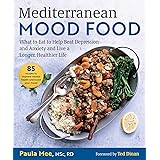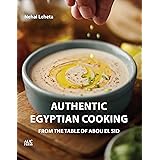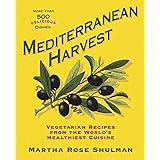Oftentimes, the most profound culinary experiences are derived from seemingly simple combinations, those that offer an unexpected synergy of textures and flavors. Just as observed in the accompanying video, where the allure of a dual-textured bite is effortlessly demonstrated, the coupling of melting cheese with crispy chicken represents more than just a casual snack; it embodies a sophisticated interplay of gastronomic elements. This particular pairing, while appearing straightforward, is frequently celebrated by enthusiasts and professionals alike for its remarkable ability to engage multiple sensory receptors simultaneously. The immediate satisfaction derived from such a dish is often attributed to fundamental principles of culinary science and sensory perception. Indeed, the subtle nuances within this “unexpected combo” warrant a deeper, more analytical exploration, extending beyond mere enjoyment to understand its profound appeal.
Deconstructing the Gastronomic Appeal of Crispy Chicken with Melting Cheese
The inherent attractiveness of a dish featuring melting cheese and crispy chicken is deeply rooted in evolutionary predispositions for fat, salt, and protein. From a primal perspective, the richness of cheese, often laden with lipids, signals high caloric value, while the chicken provides essential protein and a savory base. This combination transcends simple hunger satisfaction, moving into the realm of complex flavor profiles and textural contrasts that elevate the eating experience. The Maillard reaction, instrumental in creating the golden-brown crust of perfectly cooked chicken, contributes hundreds of flavor compounds, creating a deep umami character. Furthermore, the enzymatic processes involved in cheese ripening produce amino acids and fatty acids that contribute to its distinctive aroma and taste. Consequently, a synergistic effect is achieved when these components are united, where the sum is demonstrably greater than its individual parts.
The Science of Texture: Why Contrast Matters in Culinary Delights
In the domain of advanced gastronomy, texture is frequently considered as vital as flavor, dictating the overall mouthfeel and contributing significantly to perceived deliciousness. The juxtaposition of textures, specifically the firm, audible crunch of crispy chicken against the yielding, creamy consistency of melting cheese, is a classic example of this principle in action. This dynamic contrast provides a stimulating tactile experience that prevents palate fatigue and enhances the enjoyment of each bite. Research in food science indicates that multisensory experiences, especially those involving pronounced textural differences, lead to increased satisfaction and memorability of a dish. Therefore, the deliberate creation of this textural dichotomy is not merely incidental but is, in fact, a calculated culinary strategy designed to heighten consumer delight. The rheological properties of both the chicken’s crust and the molten cheese are critically important for achieving this desired effect.
Flavor Dynamics: The Umami and Salt Connection in the Perfect Pairing
The flavor profile of crispy chicken with melting cheese is predominantly driven by umami and salinity, two of the fundamental tastes recognized by the human palate. Umami, often described as a savory or meaty taste, is abundant in both well-cooked chicken and aged cheeses, stemming from amino acids like glutamate. The rich, salty notes present in most cheeses further amplify the umami, creating a deeply satisfying and addictive flavor loop. This interplay is a prime example of flavor synergy, where components enhance each other’s inherent qualities, resulting in a more complex and satisfying gustatory sensation. Moreover, the fat content of the cheese acts as a carrier for fat-soluble flavor compounds, ensuring a lingering and pleasant aftertaste. The balanced deployment of these flavor elements is paramount for achieving a truly harmonious and impactful dish, appealing to a broad spectrum of culinary preferences.
Mastering the Crispy Chicken: Techniques and Considerations for Optimal Crunch
Achieving truly crispy chicken involves a meticulous understanding of various cooking methodologies and ingredient interactions. The goal is to maximize surface dehydration and facilitate the Maillard reaction, which is responsible for both browning and flavor development. Deep-frying is one of the most effective methods, where the rapid transfer of heat creates a formidable crust, often enhanced by coatings such as seasoned flour, breadcrumbs, or panko. Air frying offers a less oil-intensive alternative, utilizing convection currents to circulate hot air and achieve a similar crisping effect. Baking, particularly when combined with a pre-treatment like brining or a thin batter, can also yield satisfactory results, especially when higher oven temperatures are employed. Regardless of the chosen technique, factors such as oil temperature, cooking duration, and the initial moisture content of the chicken are critical determinants of the final texture. Consequently, careful attention to these parameters is essential for producing the desired audible crunch and textural integrity.
- **Deep Frying:** Ensures rapid heat transfer and maximum surface crisping through high-temperature oil submersion.
- **Air Frying:** Leverages circulating hot air for a crispy exterior with reduced oil, ideal for lighter preparations.
- **Baking/Roasting:** Can achieve crispness, especially with higher temperatures and proper fat rendering, often benefiting from a preliminary coating.
- **Pan-Frying:** Provides a controlled method for achieving a golden-brown crust on smaller cuts of chicken, often requiring less oil than deep-frying.
Selecting the Ideal Melting Cheese: A Culinary Guide to Texture and Flavor
The choice of melting cheese is equally crucial, as its rheological properties and flavor profile directly impact the overall success of the crispy chicken and melting cheese combination. Cheeses with excellent melting capabilities, typically those with higher moisture and fat content and lower pH, are preferred. Examples include mozzarella, known for its stretch and mild flavor; Gruyère, which offers a nuttier, more complex taste; and Fontina, providing a creamy, buttery melt. Cheddar, particularly sharper varieties, can contribute a bold, piquant note, though its melting behavior can be slightly less homogenous than other options. The enzymatic breakdown of proteins during cheese ripening, known as proteolysis, influences its ability to melt smoothly without separating into oil and solids. Therefore, selecting a cheese that melts uniformly and develops a desirable consistency without becoming greasy or grainy is paramount for achieving the ultimate culinary experience. The specific cheese varietal can significantly influence the gastronomic synergy of the entire dish.
Innovations in Comfort Food: Beyond the Conventional Crispy Chicken and Melting Cheese
While the classic pairing of crispy chicken and melting cheese holds an undeniable allure, the realm of comfort food is continuously evolving through innovative applications and ingredient substitutions. Chefs and home cooks alike are exploring diverse ways to reinterpret this beloved combination, pushing the boundaries of traditional recipes. For instance, incorporating global spice blends into the chicken’s coating, such as Japanese furikake or a bold peri-peri rub, introduces new dimensions of flavor. Experimentation with artisanal or regional cheeses, like a smoked Gouda or a creamy Taleggio, can drastically alter the dish’s character, imparting unique savory or pungent notes. Furthermore, the format of presentation is being reimagined, moving beyond the simple cutlet to include crispy chicken-stuffed arancini with a molten cheese core, or even a deconstructed version where crisp chicken “croutons” are served atop a rich cheese fondue. These innovations exemplify the dynamic nature of comfort food, demonstrating how familiar concepts can be revitalized through creative culinary approaches, continually offering new interpretations of the satisfying melting cheese and crispy chicken experience.











